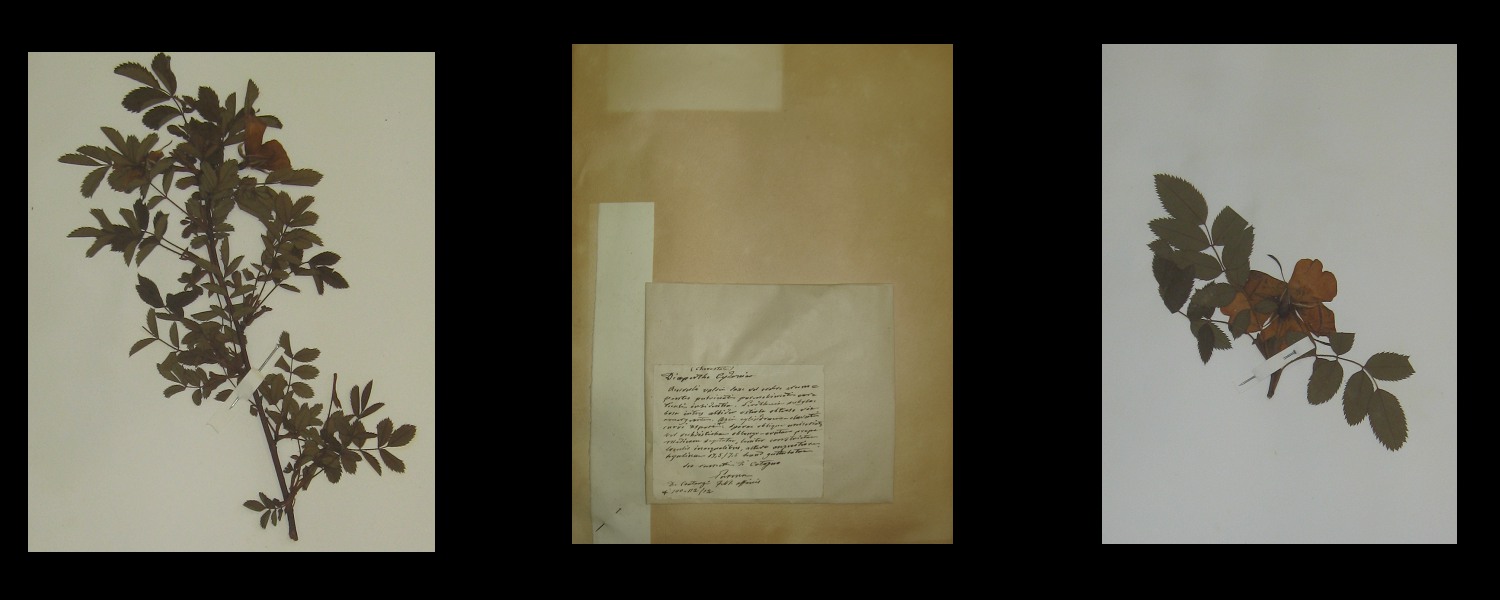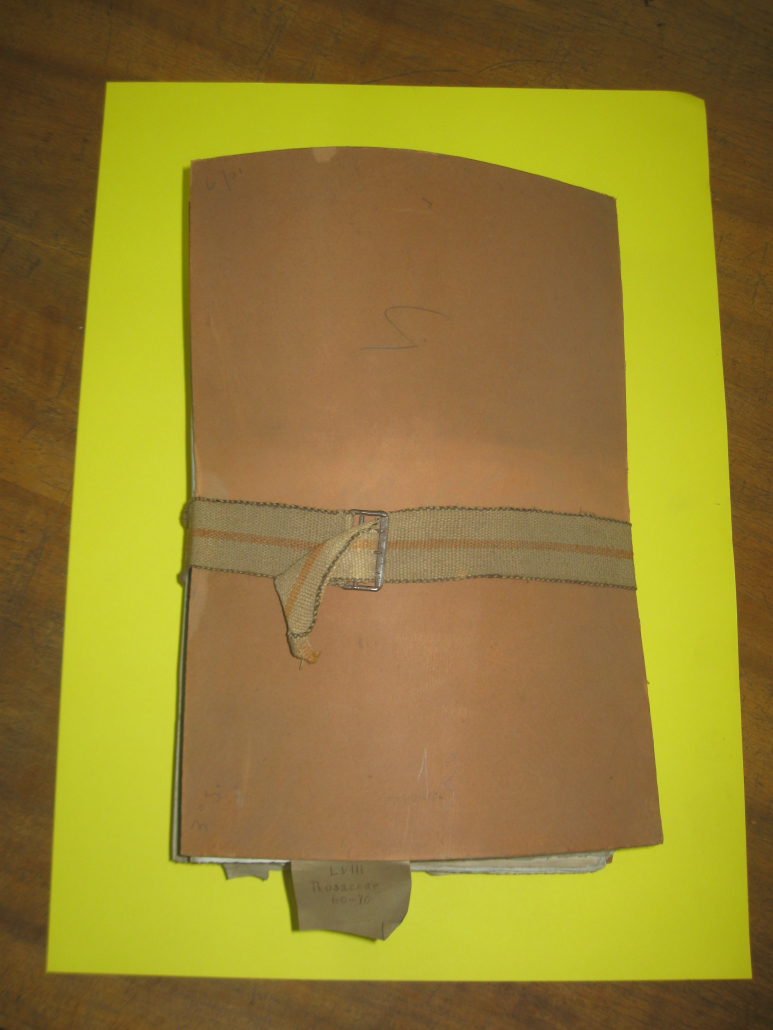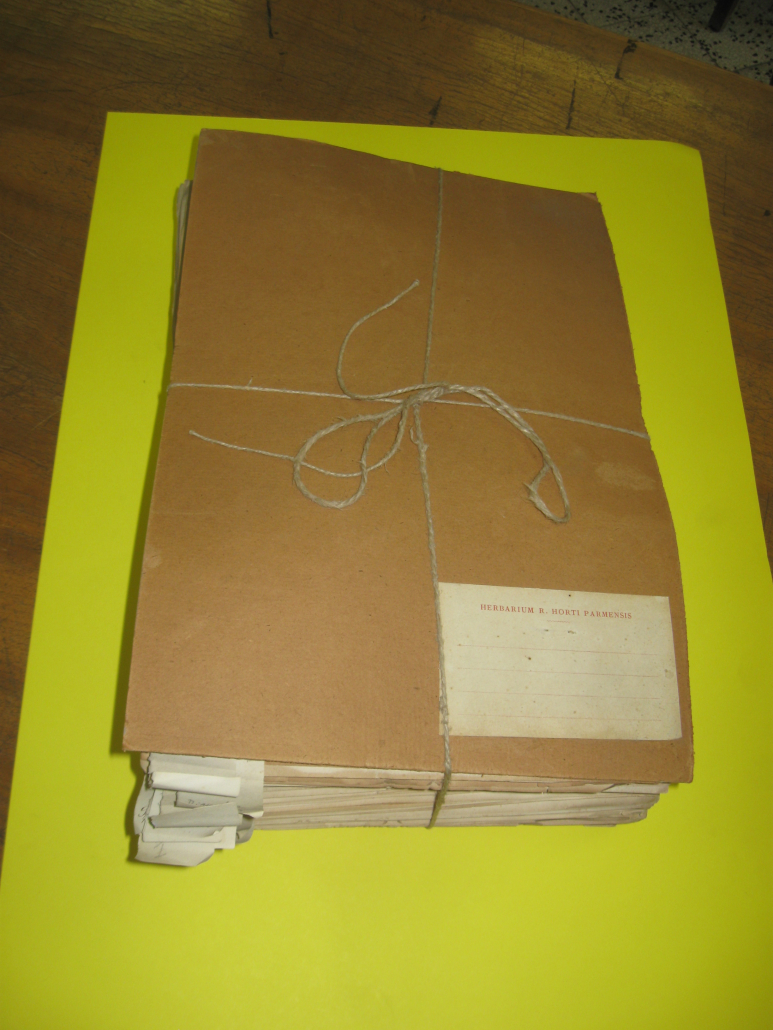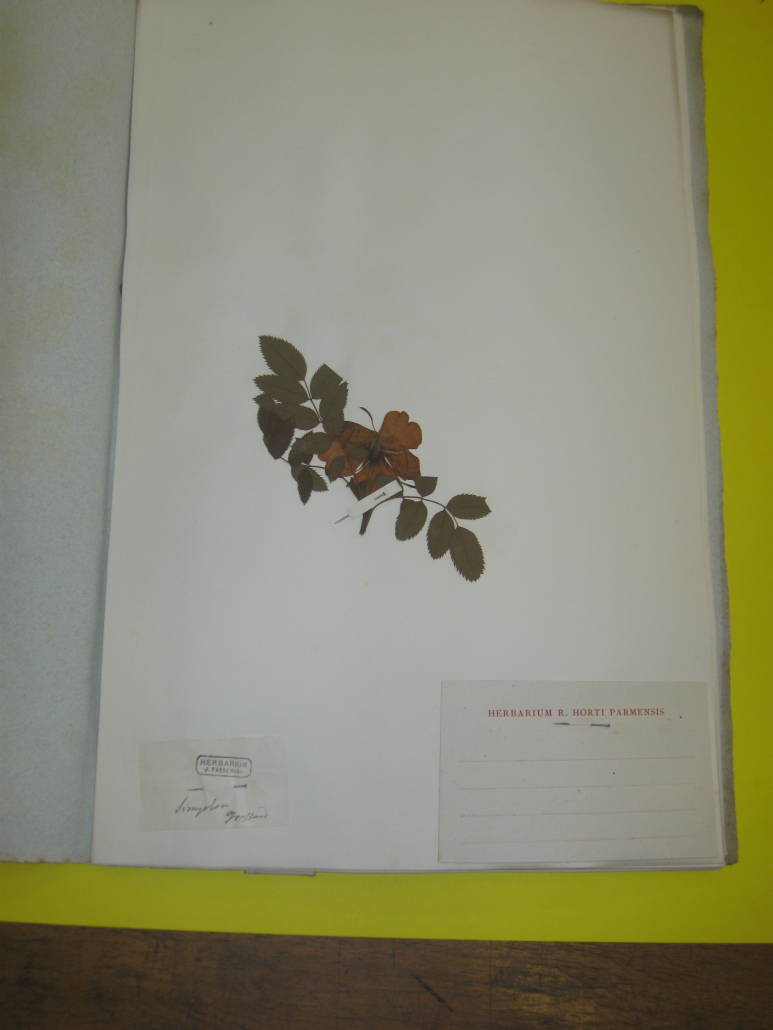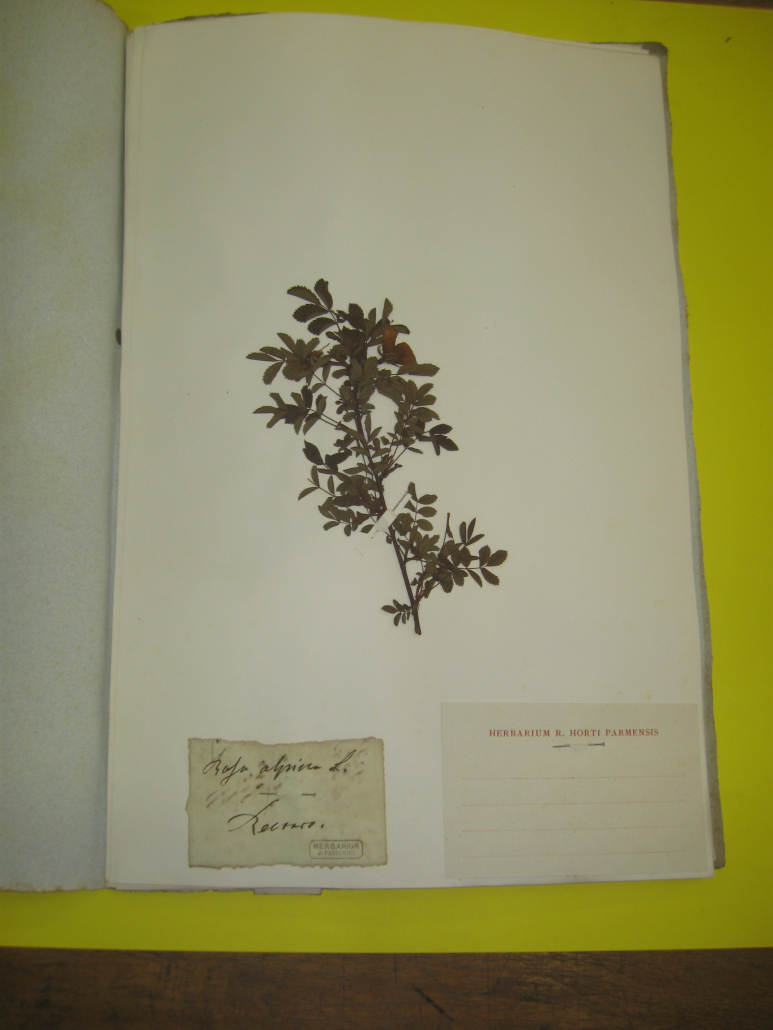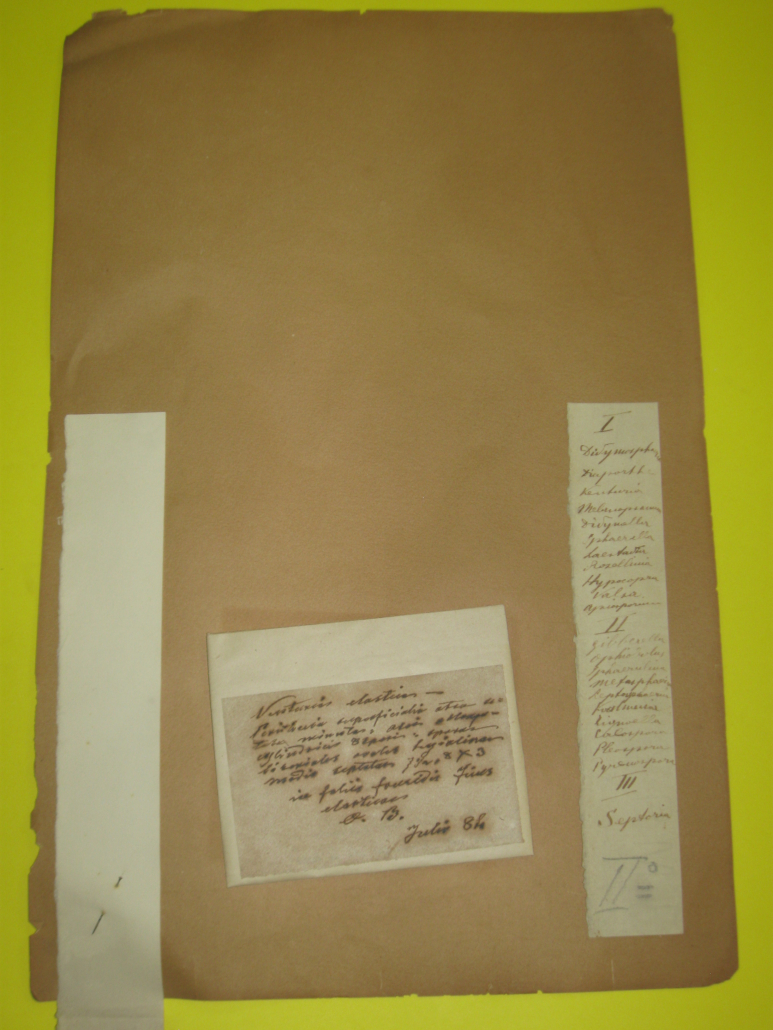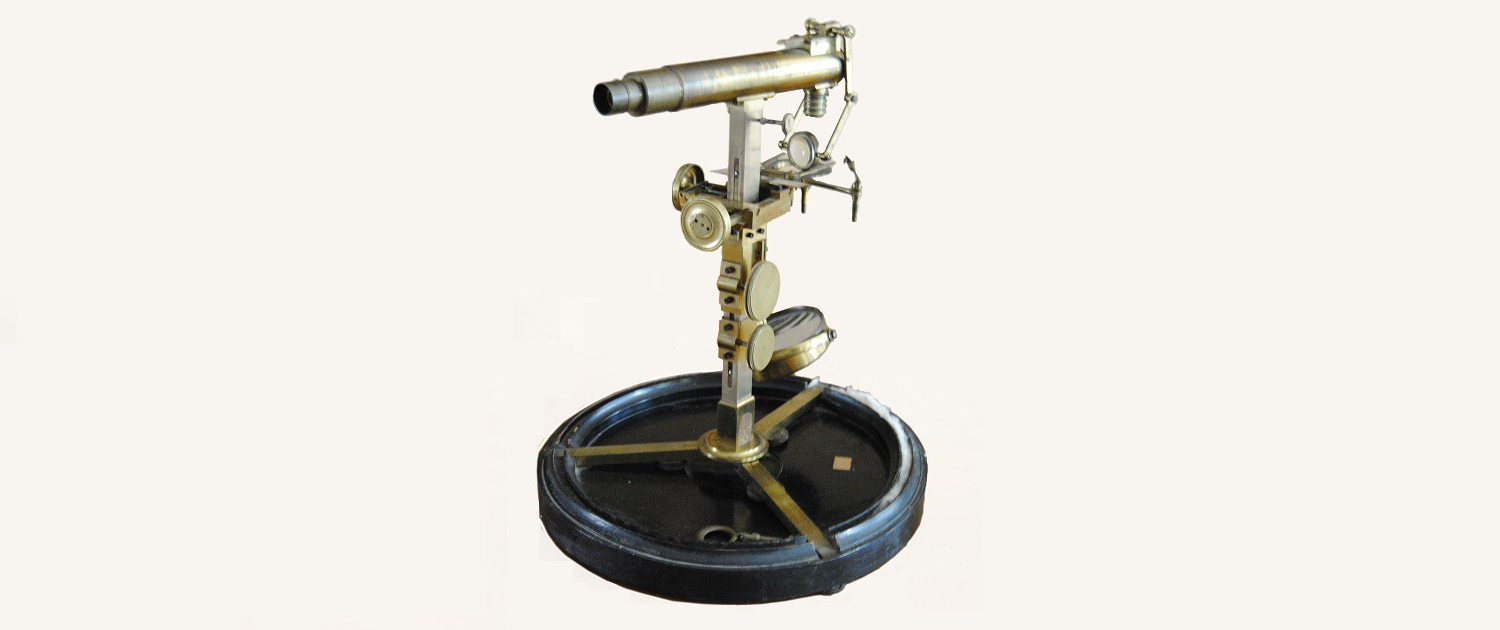Giovanni Passerini’s herbarium includes a phanerogamic herbarium, with dried specimens of phanerogamous plants, i.e. plants with obvious sexual organs and reproducing through seeds, bearing the name of the specimen and the collection locality, and a cryptogamic herbarium, containing samples of plant parts affected by mycromycetes, i.e. microscopic parasitic and saprophytic fungi of plants.
Passerini’s herbarium represents the most scientifically valuable collection of all the herbaria in the Botanical Garden.
It provides an insight into the mycological flora of Parma in the 19th century, of which Passerini was and remains the most distinguished scholar; even today, many of these samples are requested for study by academic institutions at an international level.

